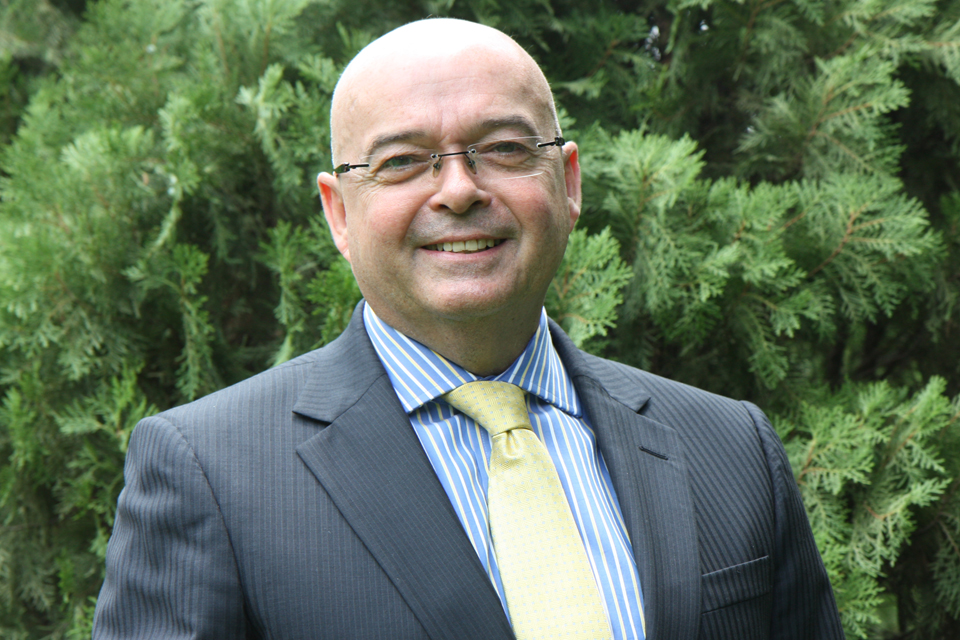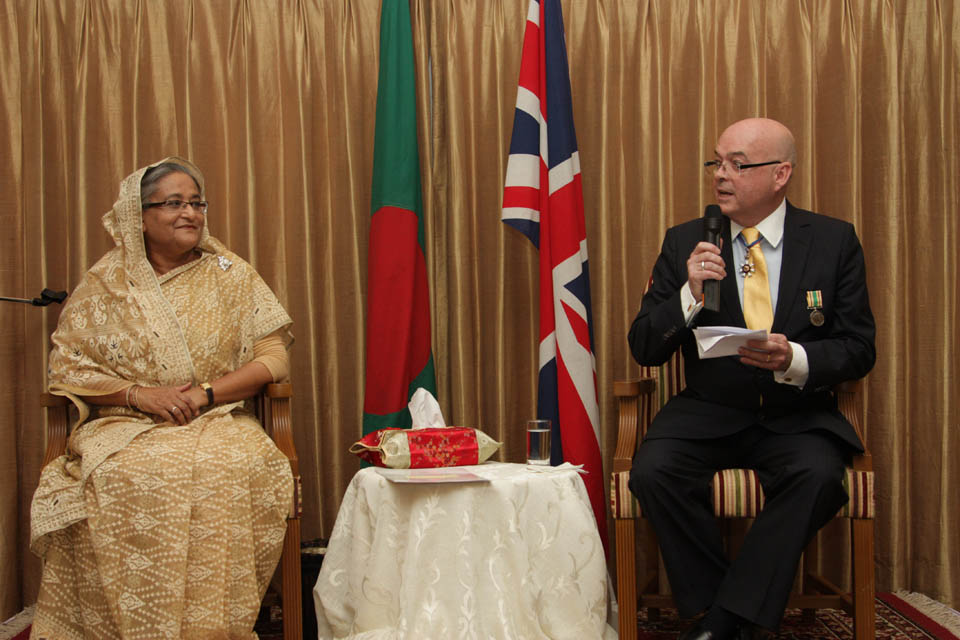Diamond Jubilee sculpture: a tribute to Her Majesty the Queen’s role as the mother figure of the Commonwealth
British High Commissioner's speech during the unveiling event. This is a transcript of the speech, exactly as it was delivered.


Prime Minister Sheikh Hasina and British High Commissioner Robert Gibson unveil Diamond Jubilee sculpture
British High Commissioner to Bangladesh Robert Gibson said:
I am extremely grateful to the Honourable Prime Minister for agreeing to take time out of her very busy schedule to attend this special ceremony.
It is a great, and unique, privilege for us that you are here today, and testament to the reputation of the Commonwealth and Her Majesty Queen Elizabeth.
I know that the Honourable Prime Minister has met her Majesty on several occasions, not least at last year’s 2012 Olympic Games in London. I was pleased that the Prime Minister was able to attend the opening ceremony, which I know she enjoyed.
I am disappointed today however that the Prime Minister did not try to copy the Queen and parachute into the Residence from a helicopter.
Her Majesty Queen Elizabeth is only the second monarch in British history to have celebrated 60 years on the throne. The celebrations around the world over the last twelve months have recognised Her Majesty’s dedication and commitment. A commitment not only as Queen of the United Kingdom of Great Britain and Northern Ireland and Queen of 15 other countries spread across the globe. But also her commitment as Head of the Commonwealth.
The Commonwealth was established by the Declaration of London in 1949, with King George VI, the Queen’s father as its head. The Declaration emphasised the freedom and equality of its member states and the pursuit of peace, liberty and progress.
When King George died, the Queen assumed the role of Head of the Commonwealth. Since then the Queen has personified the links between these 54 very disparate countries around the world.
She has been instrumental in ensuring that this unique global network has flourished. She has been one of the staunchest supporters and defenders of the Commonwealth and is proud of its role in today’s world.
It is not an organisation preserved in aspic, but a vibrant and dynamic organisation that seeks to ensure its relevance to its citizens. At the 2011 Commonwealth Heads of Government Meeting (CHOGM) in Perth, the Heads of Governments, including our chief guest today agreed to a ‘Charter of the Commonwealth’.
The Charter identifies priorities for the Commonwealth such as development for poorer countries, and improving human rights and democracy. Also at CHOGM the Commonwealth launched the Commonwealth Connects website.
This new website will bring together all Commonwealth citizens and provide access to information and host a secure area for professionals across the Commonwealth to network.
This year on Commonwealth Day, on March 11, Her Majesty spoke about how the Commonwealth has helped to bring strength, resilience and pride in our communities and in our nations.
She said:
What lies at the heart of our Commonwealth approach is individuals and communities finding ways to strive together to create a better future that is beneficial for all.
Our shared values of peace, democracy, development, justice and human rights – which are found in our new ‘Commonwealth Charter’ – mean that we place special emphasis on including everyone in this goal, especially those who are vulnerable.
Let us bear in mind the great opportunity that is offered by the Commonwealth – of joining with others, stronger together, for the common good.
Fine words indeed.
A common good is what defines the relationship between Britain and Bangladesh. We are two disparate nations: but two great friends. We enjoy a strong and long-lasting relationship, which is important to both our countries.
Many British people have been honoured over the last twelve months to receive from the Government of Bangladesh awards recognising their contribution during the War of Liberation and the creation of Bangladesh.
In turn many people from Bangladesh have been honoured by the Queen for their contribution to our bilateral relationship.
And I am indeed honoured to see many of them here today, proudly wearing their insignias of office.
As Bangladesh prepares to mark 42 years of independence, we are proud that the UK was the first European country to recognise Bangladesh.
We are proud that the success of our relationship is founded on a long-standing and deep bond which stretches across – and beyond – these four decades.
We are proud of our people-to-people links that lie at the very heart of this relationship: We are proud that Britain is now home to nearly half a million British nationals of Bangladeshi origin or heritage and of the contribution that they make to Britain and its way of life.
And we are proud that the contribution that Her Majesty has made to the Commonwealth is so strong and so valued that the Honourable Prime Minister should have agreed to grace this special ceremony.
Shortly the Honourable Prime Minister will unveil a sculpture to commemorate the Queen.
This sculpture is entitled ‘Mother’. It has been created by the renowned Bangladeshi sculptor Hamiduzzaman Khan, through the kind sponsorship of Standard Chartered Bank - one of the most prominent, long standing and largest British companies in Bangladesh.
The sculpture is a tribute to Her Majesty the Queen’s role as the mother figure of the Commonwealth. It will sit for as long as the British Residence is here as a tribute to Her Majesty and to the friendship between Britain and Bangladesh.
But before I ask her to unveil the sculpture could I invite the Honourable Prime Minister to say a few words.